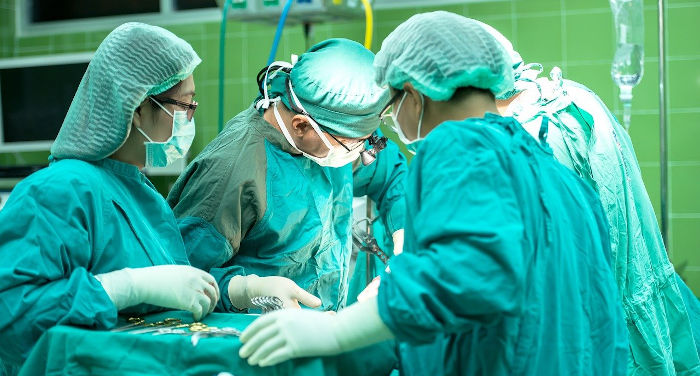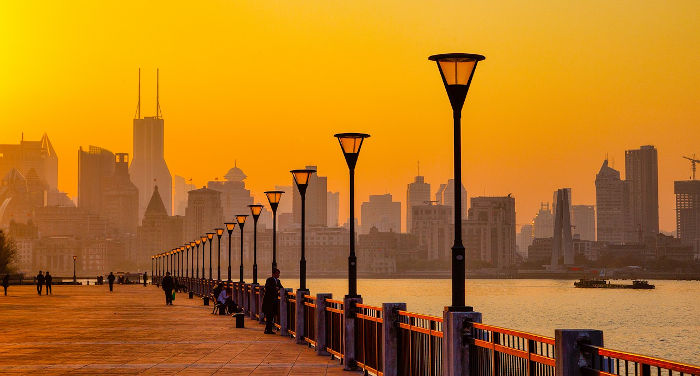
Hospitals in China: Our Guide – Index
In the past decade, China has become an increasingly popular country for travelers and expats moving there for career opportunities.
Yet, before you embark on a journey to a foreign developing country like China, you should do some research on how the healthcare system works, what kinds of hospitals you can visit, if you need insurance and more.
Truth be told, the Chinese healthcare system is significantly different compared to Western countries, often with lower standards. Even if the Chinese health sector has improved much over the years, many challenges lie ahead, something that I will explain more about later.
The Chinese healthcare system
Having the biggest population in the world and a large inequality in wealth, access to medical facilities and quality of healthcare vary much in China. In the past decades, the Chinese government has been bashed on for not providing extensive health care to its citizens.
But, since the late 90s, we’ve seen the introduction of many reformations, with a goal that all citizens should have basic medical coverage. Now, there are three health insurance systems available in urban and rural areas that give basic medical coverage to more than 90% of China’s population:
- The Basic Medical Insurance for Urban Employees
- The Basic Medical Insurance for Urban Residents
- The New Rural Cooperative Medical Insurance (2003)
To emphasize: These insurance schemes only provide basic coverage and patients generally need to pay 30% to 80% of the medical fees as copayments. The copayments differ between cities and counties.
The Basic Medical Insurance for Urban Employees (UEBMI)
The Urban Employees’ Basic Medical Insurance System was introduced in 1998 and is mandatory for employed people in urban areas.
This gives employees basic medical insurance coverage. Generally, employees pay around 2% of their salaries and employers pay around 6% of employees’ salaries to finance this system.
The Chinese healthcare system still requires that you pay medical fees out of your pocket and you might be reimbursed for some of the costs, depending on the insurance. That said, this insurance scheme doesn’t give you access to private hospitals or cover the costs of emergency transportation.
The Basic Medical Insurance for Urban Residents (URBMI)
This medical insurance scheme was introduced in 2007 with the main purpose to cover children, primary and secondary students, and unemployed residents who are not covered by the UEBMI explained above.
The premiums are determined based on the local economy in the city, the local government, the expense level, and the income of the household. Low-income households, young children, and disabled students get extra government subsidies.
The New Rural Cooperative Medical Insurance (NRCM)
The NRCM was introduced in 2003 and covers more than 90% of rural residents in China. It’s not as comprehensive as the two above-mentioned schemes and gives partial coverage for medical expenses, except for some drug and outpatient expenses.
The NRCM is financed by government subsidies and from the premiums paid by insured people.
Types of hospitals in China
The same as it goes in many other Asian countries, you can visit public hospitals, private local hospitals, and international hospitals. Let’s have a look at each option so that you’re prepared if you get ill or experience an accident.
Public Hospitals
Visiting public hospitals can be a somewhat exhausting experience. In many cases, the hospitals are flooded with people, nurses and receptionists don’t speak English, and the facilities lack hygiene. Don’t be surprised if you have to walk through hallways or share elevators with people that are on the brink of death.
One of the main problems is that even if the bigger cities (like Shanghai and Beijing) have the best medical facilities, people from remote areas and surrounding provinces go on a pilgrimage to these cities to get access to better healthcare.
You’ll also be surprised how inefficient and confusing the process is when visiting a public hospital, something that we’ll review later in this article.
Another point worth mentioning is that public hospitals make a great profit from the sale of drugs, which are often imported from overseas. This creates a monopoly where hospitals can charge almost as much as they want.
For example, Xarelto is a blood-thinner produced by Bayer that costs around 2 – 2.5 US dollars per tablet in Europe. In China, you need to pay as much as 100 RMB (15 US dollars) for a single tablet. Doing the math, few people can afford to pay 3,000 RMB (450 US dollars) per month for a single medication.
That said, you can visit public hospitals if you’re on a restricted budget and need treatment for outpatient issues. Just do some research beforehand, preferably with the help of a Chinese person, so that you know which hospital to visit when the time comes.
Private Chinese hospitals
Not only have foreigners seen the issues with public hospitals as the demand for Chinese private hospitals grows at a steady rate. At the end of 2017, China had more than 18,000 private hospitals, which accounts for around 60% of the total amount of hospitals.
Some benefits of visiting private Chinese hospitals are that the facilities are cleaner, it’s not as cramped, and nurses and doctors speak better English. Of course, this comes with higher fees.
Having said that, public hospitals are still preferred among most Chinese and mainly since private hospitals have poor medical insurance coverage, weak brand images, and lack resources. This will most likely improve in the coming years as China continues to develop into a market economy and disposable incomes increase.
International Hospitals
International hospitals have many highly-educated foreign doctors and provide services that are equal or sometimes better than Western countries. These hospitals mainly cater to expats who have good health insurance plans paid for by their employers.
International hospitals provide the best healthcare of the three options listed, but it’s also significantly more expensive. An initial consultation can cost up to a couple of hundred dollars, while a basic MRI can cost you a thousand dollars.
Before you visit an international hospital, be sure to clarify with your insurance company whether they will cover the costs for the treatments and medication.
How to visit a Chinese hospital
Before you visit a Chinese hospital, you should have a decent understanding of how it works from the time you get sick until you leave the hospital. Below, I’ve included a step-by-step guide so that you can make your next hospital visit as flawless as possible.
1. You should preferably do some research to find the best hospitals close to your home and office. In Shanghai, there are plenty of public hospitals available and where many are specialized in certain fields. Do you have problems with vascular diseases or thrombosis? Then find a hospital that specializes in this area, such as Zhongshan Hospital.
2. Once you arrive at the hospital, go to the main cash register, fill in the forms and sign up. You must do this upon arrival at the hospital. If you’re in an emergency, tell the nurses so that they can direct you to the emergency section.
3. Pay the fee and get a number for the department and specialist you need to meet. This step is referred to as Gua Hao (挂号). Many hospitals are busy and you sometimes need to go there early in the morning to get a number. You’ll also receive a plastic card that will allow the hospital to check your previous visits and medical history.
4. When they have given you a number, you need to go to the department and area for the treatment of your specific injury or illness. Here, you must give the number to the reception.
5. Sit down and wait for a nurse to call your number or your name. They usually have a monitor showing the name and number of the person next in turn. Sometimes, you have to queue up outside the doctor’s office, if they won’t call your name or number.
6. The doctor will make an evaluation and prescribe medicines or inform the nurses to carry out tests. Go back to the cash register and pay for the tests and the medicine.
7. When you have received a receipt showing that you paid for the medication and tests, visit the area where the tests will be performed. If no tests are needed, simply go to the pharmacy directly (often on the first floor).
Insurances for China
You shouldn’t live in China without proper insurance as the costs for treatments, surgeries, and evacuations can bankrupt you. There are many horror stories about foreigners that don’t understand the risks of not having insurance, no one knows when he or she will come across an accident or sudden illness.
If you’re employed by a company that covers your insurance costs and medical expenses, you shouldn’t hesitate to visit international hospitals, if that’s within the budget and coverage.
Worth mentioning is that many public facilities don’t recognize or accept international health insurance, so you often need to pay the bills out of your pocket first.
If you find it difficult to select a suitable insurance plan, I recommend you to contact a broker that can help you to navigate the jungle of the many insurances available. Also, keep in mind that it’s generally not allowed to have travel insurance if you stay in China long-term and have China as your domicile.
Quality of healthcare in China
The quality of public healthcare is generally good in China, at least if you stay in medium-sized and big cities. The government has vast plans to further improve the health sector, with a budget that will be twice as high by 2030.
Even if the healthcare sector has improved drastically over the years, China still faces many challenges. A bit more than 2,300 top tier public hospitals run at full capacity and take care of almost 20% of out-patient consultations.
At the same time, 950,000 low-tier hospitals, clinics, and health centers try to attract more patients.
I highly recommend you to do some research to find suitable and decent hospitals, before you get ill or face an accident in China. As you’ve seen, the process when visiting a public hospital can be complex compared to Western countries with nurses and staff that speak limited or no English.
If you need to visit a public Chinese hospital, I recommend you to bring a Chinese friend or colleague that can help you with the visit and to communicate with the staff. They’re also familiar with the process and can help you to sign up, pay the fees, and visit the right department.
Tips
- Check with your company and/or insurance provider to understand what you’re covered for. Don’t visit an international or private hospital before you know that you will be covered.
- Do research and find good hospitals close to your office and home. Many hospitals are specialized in certain fields, if you have skin problems, you better go to a hospital that is reputable in helping people with skin problems.
- If you cannot communicate in Chinese, try to bring a Chinese friend, colleague, or your partner, as this will make the process more efficient and time-saving.
- Keep in mind that public hospitals generally don’t provide medical equipment, such as crutches. Thus, someone might need to help you to buy that in a pharmacy, which is often located close to the hospital.
Photo Credits: Photo by Sasin Tipchai on Pixabay



